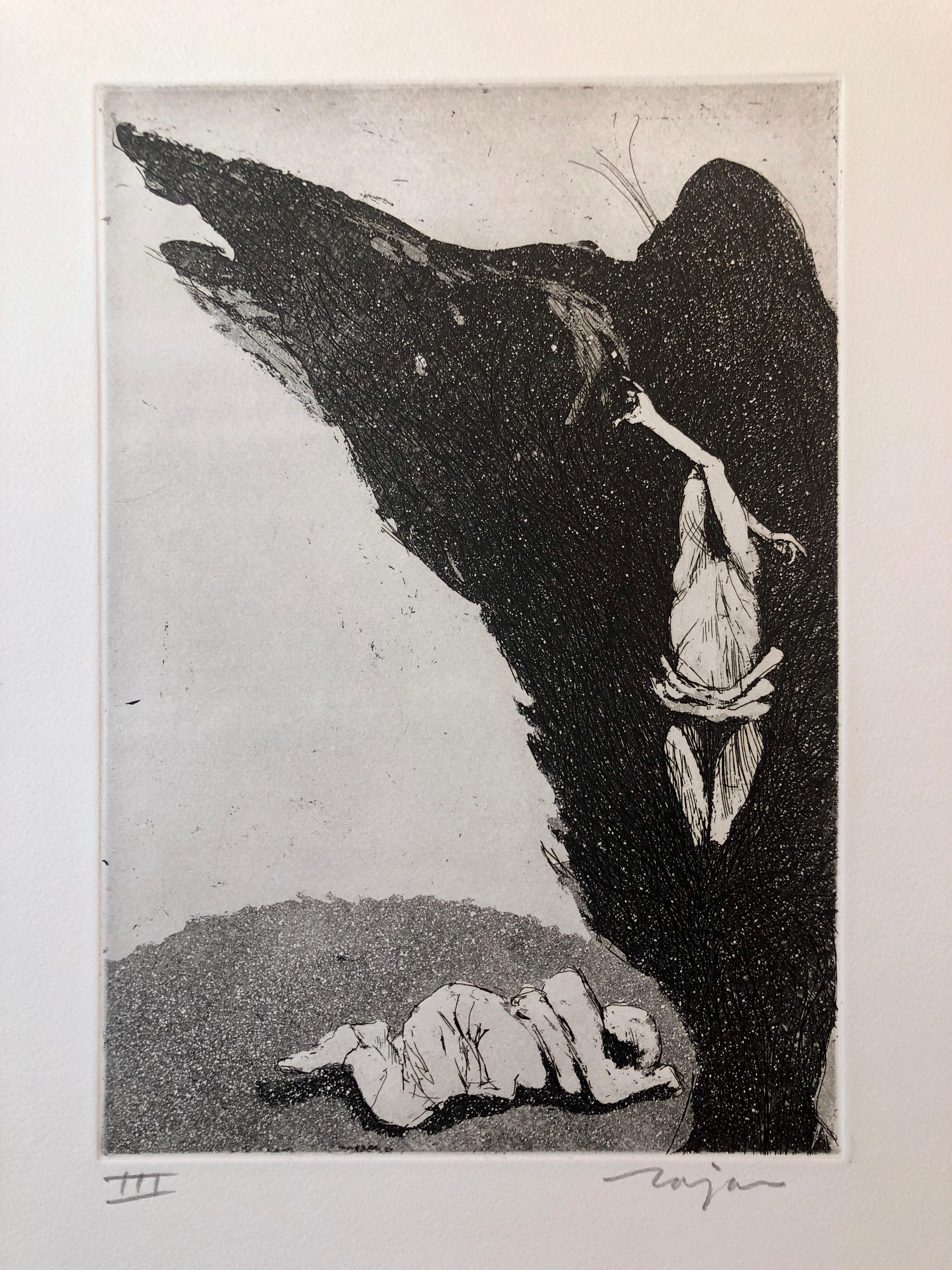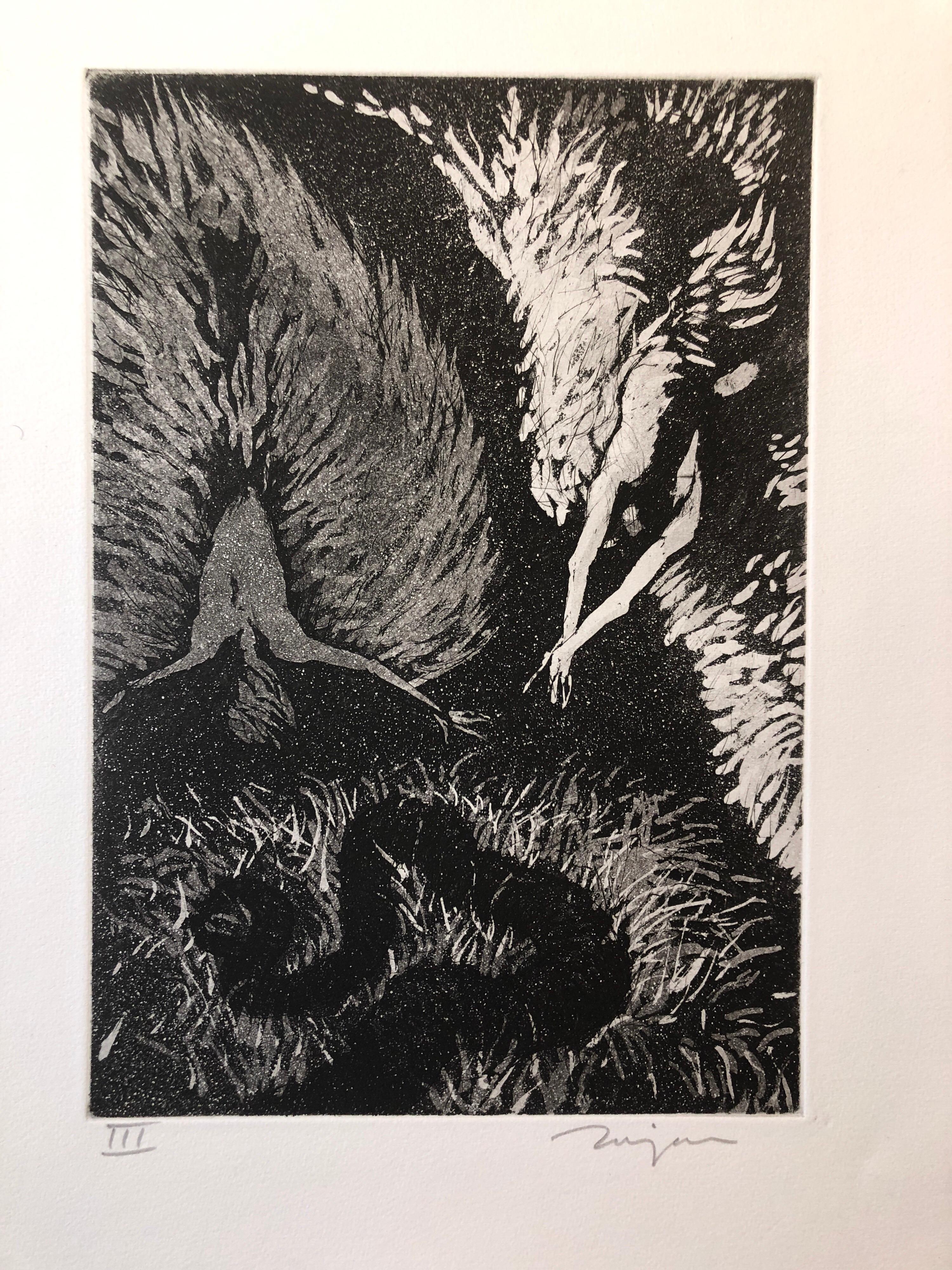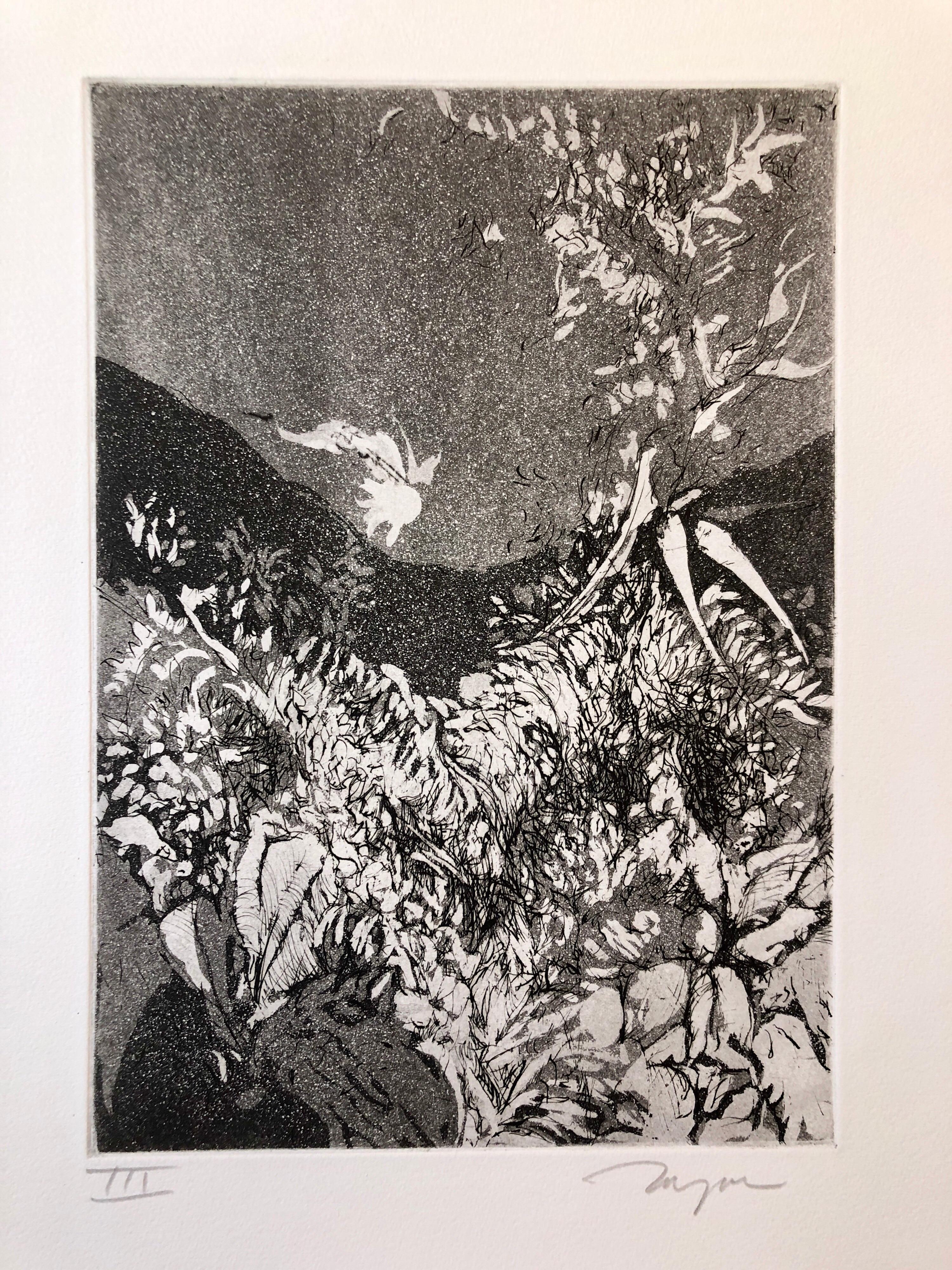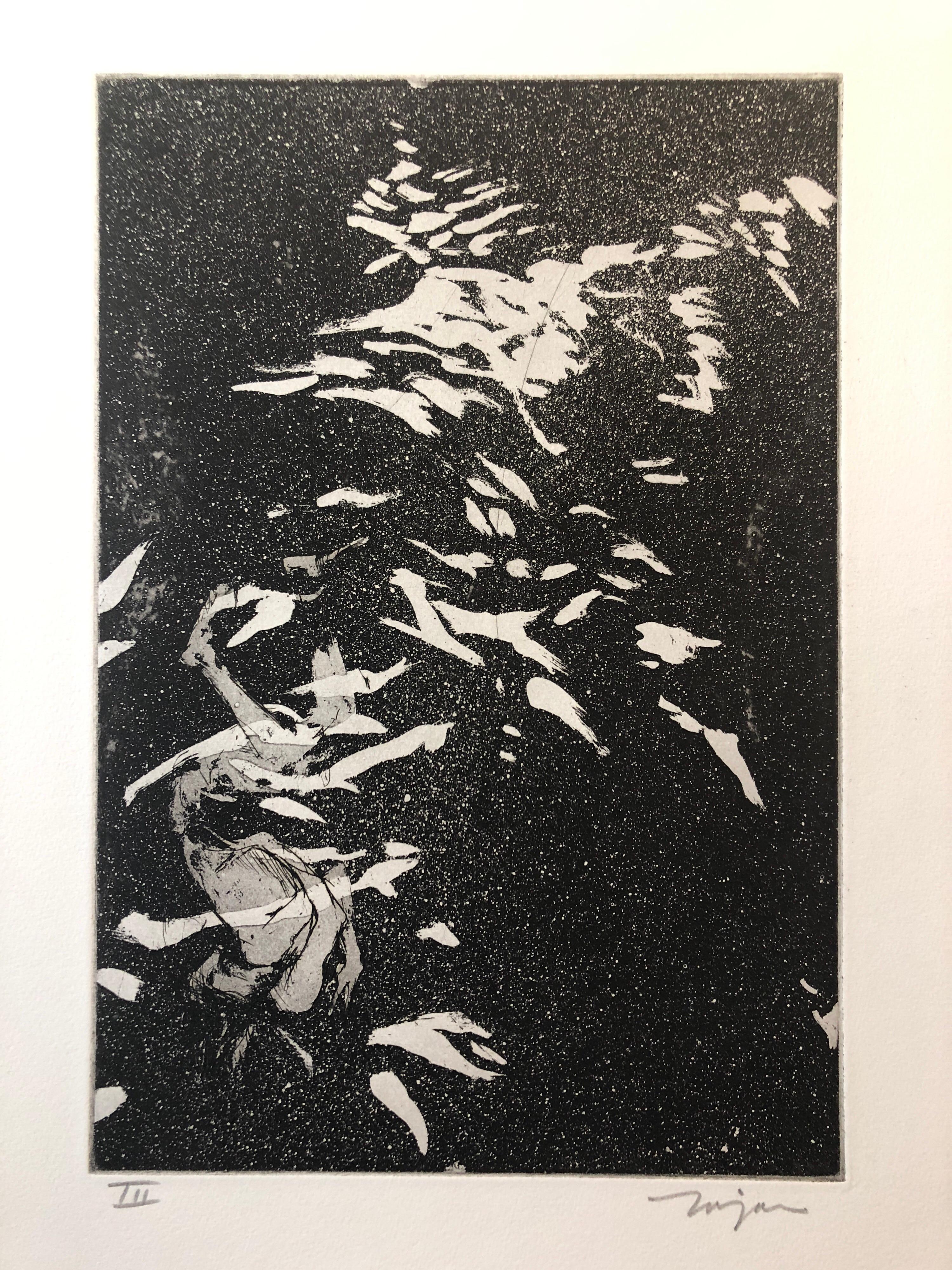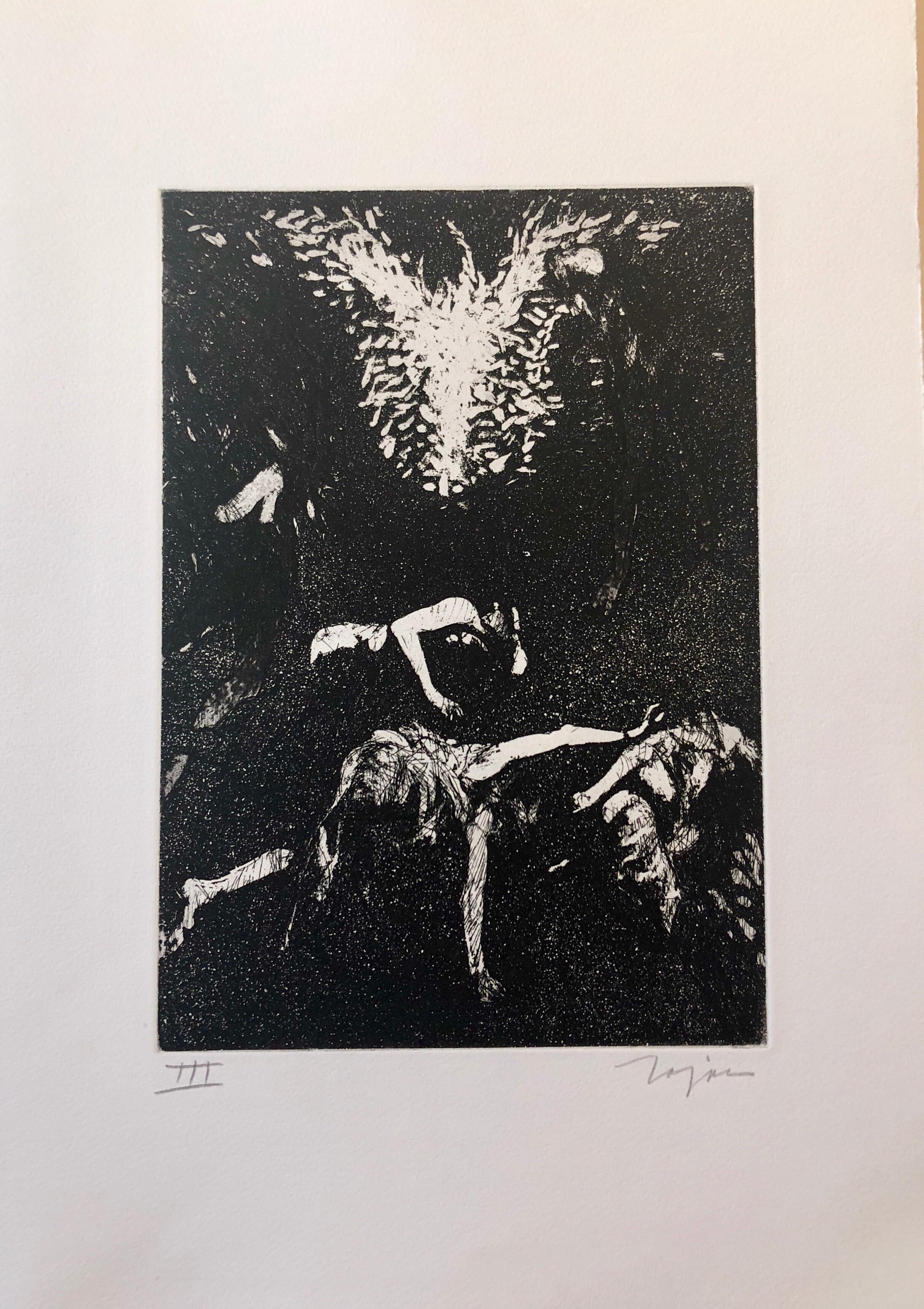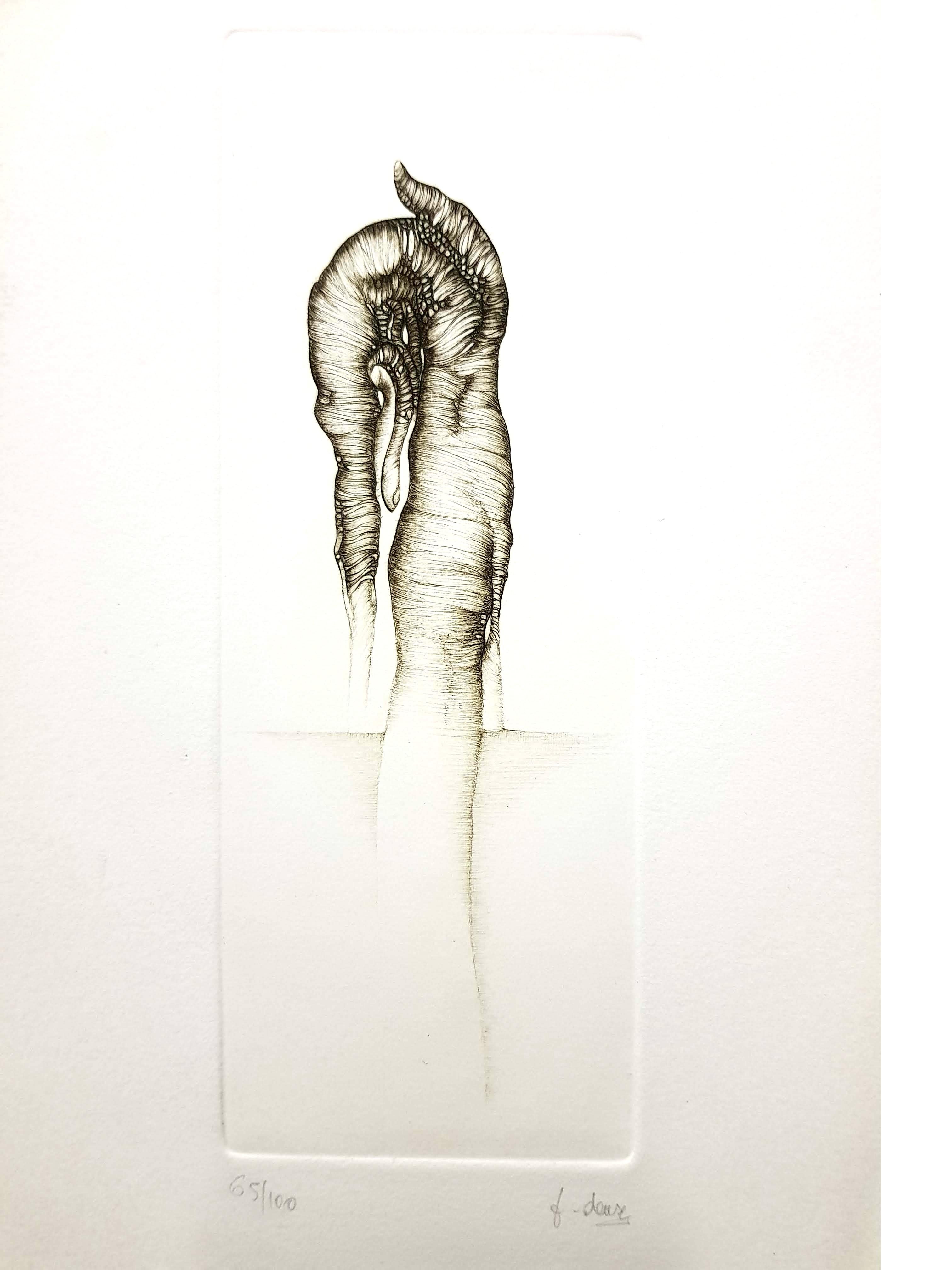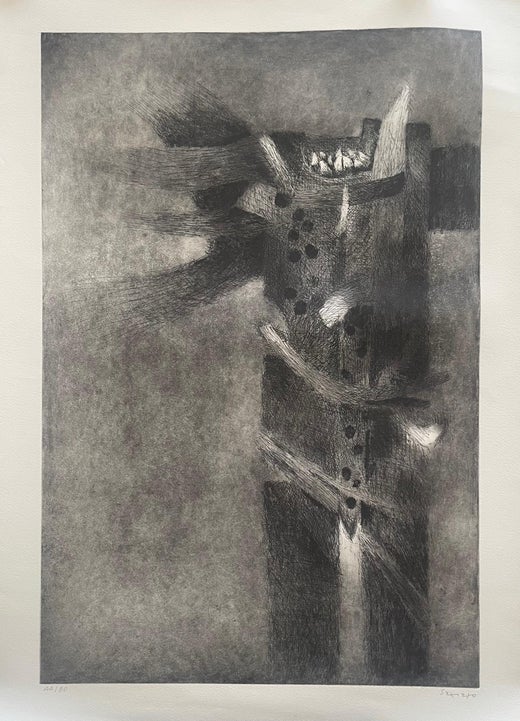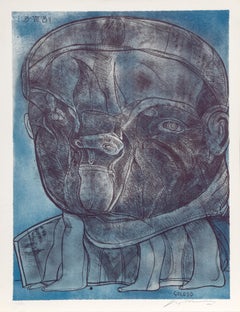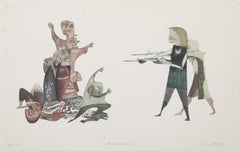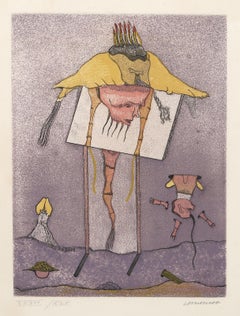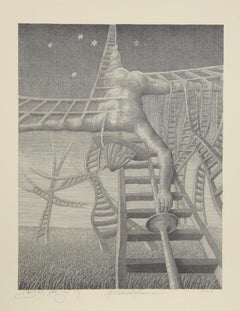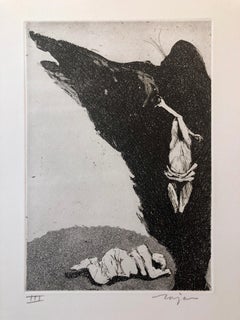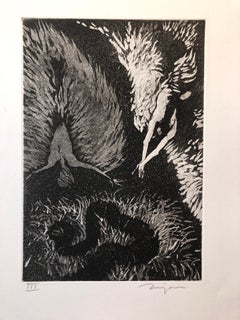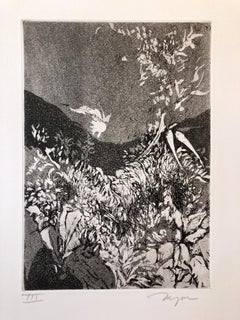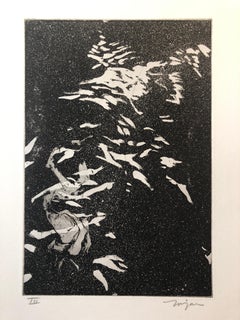Items Similar to Transhumante, Surrealist Aquatint Etching by Fernando de Szyszlo
Want more images or videos?
Request additional images or videos from the seller
1 of 7
Fernando de SzyszloTranshumante, Surrealist Aquatint Etching by Fernando de Szyszlo
$3,950
£3,039.11
€3,472.95
CA$5,653.39
A$6,164.92
CHF 3,238.59
MX$73,890.29
NOK 41,068.56
SEK 38,218.17
DKK 25,939.08
About the Item
Transhumante
Fernando de Szyszlo, Peruvian (1925–2017)
Aquatint Etching, signed and numbered in pencil
Edition of 44/80
Size: 42.5 x 28 in. (107.95 x 71.12 cm)
- Creator:Fernando de Szyszlo (1925, Peruvian)
- Dimensions:Height: 42.5 in (107.95 cm)Width: 28 in (71.12 cm)
- Medium:
- Movement & Style:
- Period:
- Framing:Framing Options Available
- Condition:
- Gallery Location:Long Island City, NY
- Reference Number:Seller: RO843601stDibs: LU46615722162
Fernando de Szyszlo
Fernando de Szyszlo Valdelomar was a Peruvian painter, sculptor, printmaker, and teacher who was a key figure in advancing abstract art in Latin America since the mid-1950s, and one of the leading plastic artists in Peru. Szyszlo was born in Lima, Peru; his mother was Peruvian of Spanish-Indian descent, and his father was a geographer from Poland. In 1943, Szyszlo entered the architecture school of the National University of Engineering, but abandoned plans to follow that profession and enrolled in the School of Plastic Arts of the Pontifical Catholic University of Peru. After his graduation in 1948, he traveled to Europe where he studied the works of the masters, particularly Rembrandt, Titian and Tintoretto, and absorbed the varied influences of Cubism, Surrealism, Informalism, and abstraction. Szyszlo lived in Paris and Florence from 1948 to 1955, and then returned to Peru. While in Paris he met Octavio Paz and André Breton and was part of the group of expatriate Latin American artists and writers who met regularly at the Café de Flore, engaging in vigorous discussions on how they could participate in the international modern movement while preserving their Latin American cultural identity. Upon his return to Peru, Szyszlo became a major force for artistic renewal in his country breaking new ground by expressing a Peruvian subject matter in a non-representational style. In 1962, he became a professor of art at Cornell University. In 1965 he became a visiting lecturer at Yale University. Szyszlo was married to the Peruvian poet Blanca Varela (1926–2009), with whom he had two children. At the time of his death, he resided and worked in Lima. He died on October 9, 2017, the same day as his second wife, Lila Yábar(m.1988) in a domestic accident according to his secretary.
About the Seller
4.9
Platinum Seller
Premium sellers with a 4.7+ rating and 24-hour response times
Established in 1979
1stDibs seller since 2014
3,179 sales on 1stDibs
Typical response time: 1 hour
- ShippingRetrieving quote...Shipping from: Long Island City, NY
- Return Policy
More From This Seller
View AllColoso, Surrealist Lithograph by Jose Luis Cuevas
By José Luis Cuevas
Located in Long Island City, NY
Artist: Jose Luis Cuevas, Mexican (1934 - )
Title: Coloso
Year: 1988
Medium: Lithograph on Arches, signed and numbered in pencil
Edition: 300 (Roman Numerals)
Paper Size: 35 x 27 i...
Category
1980s Surrealist Figurative Prints
Materials
Lithograph
Fusilamiento, Surrealist Aquatint by Guillermo Silva Santamaria
Located in Long Island City, NY
Guillermo Silva Santamaria, Colombian (1922 -2007) - Fusilamiento, Year: circa 1963, Medium: Aquatint and Intaglio, signed, titled and numbered in pencil, Edition: C/A IV, Image S...
Category
1960s Surrealist Figurative Prints
Materials
Aquatint, Intaglio
Surreal Seascape, Surrealist Etching and Aquatint by Jorge Camacho
By Jorge Camacho
Located in Long Island City, NY
Jorge Camacho, Cuban (1934 -2011) - Surreal Seascape, Year: 1976, Medium: Etching and Aquatint, signed and numbered in pencil, Edition: XXXVI/XLV, Image Size: 10 x 7.5 inches, Si...
Category
1970s Surrealist Landscape Prints
Materials
Etching, Aquatint
Untitled XXVI, Surrealist Lithograph by Wojtek Kowalczyk
Located in Long Island City, NY
Untitled XXVI
Wojtek Kowalczyk, Polish (1960)
Date: 2005
Lithograph, signed in pencil
Size: 19.5 in. x 13.5 in. (49.53 cm x 34.29 cm)
Category
Early 2000s Surrealist Landscape Prints
Materials
Lithograph
Untitled XXIII, Surrealist Lithograph by Wojtek Kowalczyk
Located in Long Island City, NY
Untitled XXIII
Wojtek Kowalczyk, Polish (1960)
Date: 2005
Lithograph, signed in pencil
Size: 19.5 in. x 13.5 in. (49.53 cm x 34.29 cm)
Category
Early 2000s Surrealist Landscape Prints
Materials
Lithograph
Composition, Signed Surrealist Etching by Andre Beaudin
By Andre Beaudin
Located in Long Island City, NY
Composition
Andre Beaudin, French (1895–1972)
Date: 1934
Etching on Arches, signed and numbered in pencil
Edition of 81/100
Image Size: 11.75 x 9.25 inches
Size: 24.25 x 18.25 in. (6...
Category
1930s Surrealist Nude Prints
Materials
Etching
You May Also Like
Surrealist Figurative Aquatint Etching California Modernist Sculptor Artist
By Jack Zajac
Located in Surfside, FL
Jack Zajac, American, born 1929
1964 Etching and aquatint hand printed on Fabriano paper, pencil signed and editioned.
Edition Roman Numeral III
Image: 12 9/16 x 8 5/8 in. (31.9 x 2...
Category
1960s Surrealist Figurative Prints
Materials
Etching, Aquatint
Surrealist Figurative Aquatint Etching California Modernist Sculptor Artist
By Jack Zajac
Located in Surfside, FL
Jack Zajac, American, born 1929
1964 Etching and aquatint hand printed on Fabriano paper, pencil signed and editioned.
This one depicts winged angels.
Edition Roman Numeral III
Ima...
Category
1960s Surrealist Figurative Prints
Materials
Etching, Aquatint
Surrealist Figurative Aquatint Etching California Modernist Sculptor Artist
By Jack Zajac
Located in Surfside, FL
Jack Zajac, American, born 1929
1964 Etching and aquatint hand printed on Fabriano paper, pencil signed and editioned.
Edition Roman Numeral III
Image: 12 9/16 x 8 5/8 in. (31.9 x 2...
Category
1960s Surrealist Figurative Prints
Materials
Etching, Aquatint
Surrealist Figurative Aquatint Etching California Modernist Sculptor Artist
By Jack Zajac
Located in Surfside, FL
Jack Zajac, American, born 1929
1964 Etching and aquatint hand printed on Fabriano paper, pencil signed and editioned.
Edition Roman Numeral III
Image: 12 9/16 x 8 5/8 in. (31.9 x 2...
Category
1960s Surrealist Figurative Prints
Materials
Etching, Aquatint
Surrealist Figurative Aquatint Etching California Modernist Sculptor Artist
By Jack Zajac
Located in Surfside, FL
Jack Zajac, American, born 1929
1964 Etching and aquatint hand printed on Fabriano paper, pencil signed and editioned.
Edition Roman Numeral III
Image: 12 9/16 x 8 5/8 in. (31.9 x 2...
Category
1960s Surrealist Figurative Prints
Materials
Etching, Aquatint
Fred Deux - Grey Surrealism V - Signed Original Etching
By Fred Deux
Located in Collonge Bellerive, Geneve, CH
Fred Deux - Grey V - Signed Original Etching
Signed and Numbered
Edition of 100
Dimensions: 24 x 14 cm
Fred Deux
Fred Deux, illustrator, oral poet, writer, and, under the pseudonym Jean Douassot, author of a cult book, La Gana, was a singular artist who cannot be categorised in terms of art fashions and trends. This autodidact, born in the basement of a large house in Boulogne-Billancourt to a working-class family, constantly had to overcome, as he would say. “He had to overcome”: overcome the basement walls to access the life which called him and burnt inside him. Overcome the barriers between the arts, moving from drawing to the written word, and from the page to the tape recorder, in the face of which he recounted stories to himself in a sort of endless reverie, constantly exploring the unknown in him. Overcoming and being overcome: gradually immersing himself in drawing, so that it was life itself which overcame him and surrendered to him.
Timeline
1924
Born in Boulogne-Billancourt, Paris. The Deux family lived in the basement of a building close to the Seine that was often flooded. These living conditions formed the biographical core around in which the artist would develop his work as a future writer and artist.
1942
Deux worked in a factory as an electrician and night guard.
1943
Deux becomes part of the FTP group to resist against the factory. And then joined the Maquis du Doubs.
1945
At the liberation, Deux joined the Moroccan Goumier, and took part of the campaigns of Vosges, Alsace and Germany.
1947
Returned to France. Installation in Marseille. Worked in an important library that belonged to the family of his wife.
1948
Discovered Breton, Bataille, Cendrars, Peret, Sade... and founded the sub-group of Surrealists in Marseille and formed a link with the literary magazine of Marseille, Cahiers du Sud
Encounters the works of Paul Klee.
He begins creating his first stains with paint for bicycle and impressions (fabric and ink). At the same time, he begins to take notes for what would become "Les Rats", first version of "La Gana".
1951
Meets Cecile Reims...
Category
1970s Surrealist Still-life Prints
Materials
Etching
Read More
Romare Bearden’s Humanity Infuses His Bright, Bold Art
Through collage, painting and printmaking, the artist foregrounded Black life in America in revolutionary new ways.
Chryssa’s 1962 Neon Sculpture Was Way ahead of the Art-World Curve
By working with lettering, neon and Pop imagery, Chryssa pioneered several postmodern themes at a time when most male artists detested commercial mediums.
More Ways To Browse
Lucky Strike Vintage Poster
Marc Albert
Marc Chagall Eiffel Tower
Marc Chagall Levi
Marc Chagall Numbered Print
Marc Chagall Romeo Juliet Poster
Marc Ferrero
Marilyn Avedon
Marilyn Crying Diamond
Marina Abramovic Poster
Martin Lewis On Sale
Marvel Stan Lee Comics
Maurice Evans
Maurice Utrillo Original
Millais Art Prints
Milton Green
Mucha Flowers
Murakami Kansei
